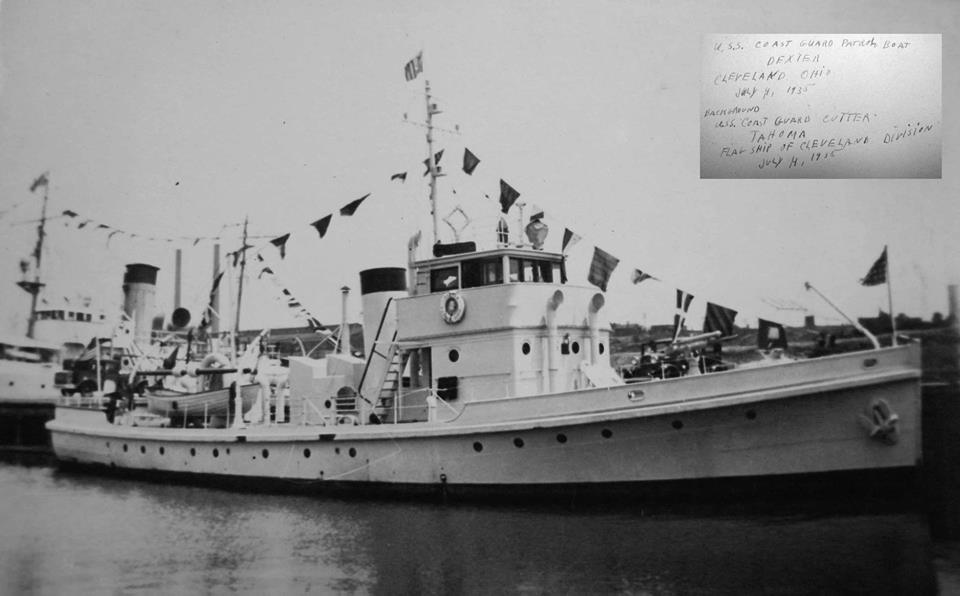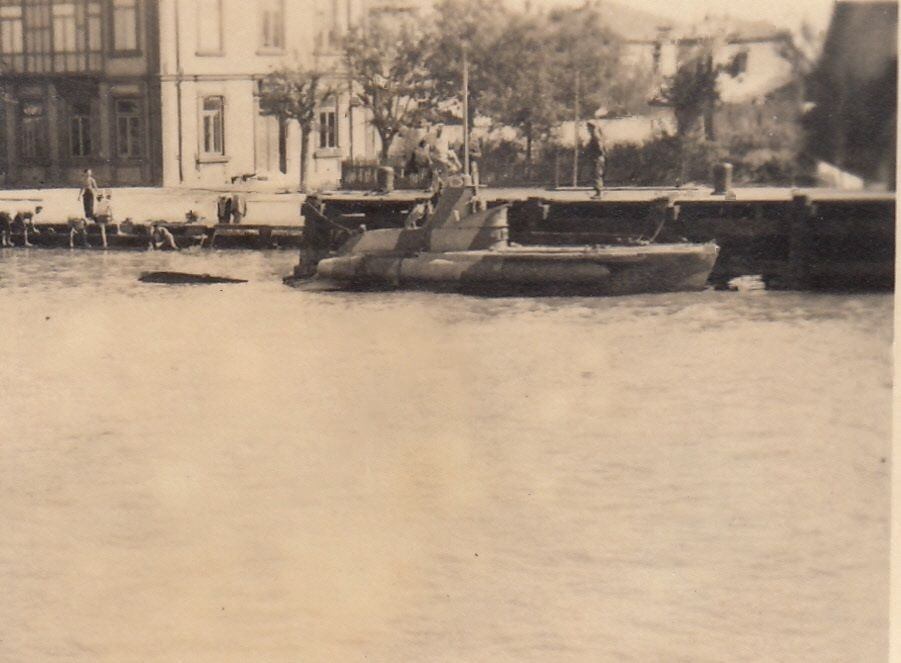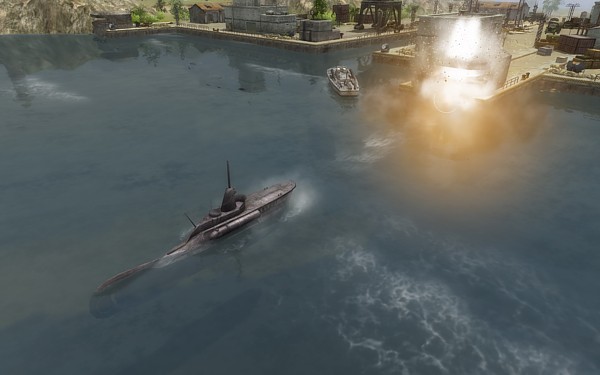Warship Wednesday, Nov. 3, 2021: Alert, you Deserved Better
Here at LSOZI, we take off every Wednesday for a look at the old steam/diesel navies of the 1833-1954 period and will profile a different ship each week. These ships have a life, a tale all their own, which sometimes takes them to the strangest places. – Christopher Eger
Warship Wednesday, Nov. 3, 2021: Alert, you Deserved Better
Here we see a member of the 35 so-called “Buck and a Quarter” Active-class Coast Guard cutters rushed into completion to deal with bootleggers during Prohibition, the USCGC Alert (WSC-127), as she appeared in 1950 coming back into her homeport at Morro Bay, still largely in her WWII configuration. These choppy little gunboats were designed to serve as subchasers in times of war and Alert did her part during the conflict.
She is back in the news this week, and not in a good way.
The class
These cutters were intended for trailing the “Blacks,” slow, booze-hauling mother ship steamers of “Rum Row” along the outer line of patrol during Prohibition. Constructed for $63,173 each, they originally had a pair of 6-cylinder 150hp Superior or Winton diesel engines that allowed them a stately speed of 10 knots, max, but allowed a 4,000nm, theoretically Atlantic-crossing range– an outstanding benefit for such a small craft.
For armament, they carried a single 3″/23 cal deck gun for warning shots– dated even for the 1920s– as well as a small arms locker that included everything from Tommy guns to .38s and M1903 Springfields. In a time of conflict, it was thought they could tote listening gear and depth charge racks left over from the Great War, but we’ll get to that later.
Taking advantage of one big contract issued on 26 May 1926, they were all built within 12 months by the New York Shipbuilding Corporation in Camden, New Jersey (although often listed as “American Brown Boveri” due to their owners at the time, the Swiss Brown Boveri corporation).
Named like the rest of the class in honor of former historic cutters, our craft recycled the moniker long held by the Coast Guard and its preceding Lighthouse Service, Revenue Marine, and Revenue Cutter Services.
A long line of Alerts
The first Alert was a 58-foot, 75-ton schooner built by Christian Bergh of New York in 1818 for $6,000. Constructed of live oak, red cedar, and locust, she spent her career policing waters off New England. She was armed with a 32-pound carronade said by some to have been recovered from the wrecked sixth-rate flush-decked sloop-of-war HMS Hermes.
The second Alert was a larger, 74-foot, 120-ton schooner that entered service in 1829. Carrying six guns– a mix of 12-pounder, 4-pounders, and 3-pounders– she participated in both the Nullification Controversy in 1832 and the Mexican War in addition to the service’s efforts to suppress the illegal slave trade and piracy at sea.
The third Alert (2 x 12 pounders) was also a schooner, purchased from consumer trade in 1855, that was later seized in January 1861 while at the docks in Mobile, Alabama by “state authorities.” Up-armed with a 32-pounder, her career with the Confederate Navy was short, as she was captured by the powerful Merrimack-class screw frigate USS Roanoke the following October and scuttled.
The fourth Alert was a small (40-foot, 10-ton) centerboard sloop that entered service in 1877 and served off the East Coast until 1896, one of the service’s final all-sail-powered vessels.
The fifth Alert was a 62-foot, 19-ton wooden-hulled steam launch acquired by the Revenue Cutter Service in November 1900. She spent seven years on quarantine duties out of Gulfport, Mississippi, and Mobile, Alabama when her crew transferred to a newly constructed vessel of the same name.
The sixth Alert, a 61-foot, 35-ton steel-hulled steam launch built at Mobile in 1907 was a regular in Mobile Bay and the Mississippi Sound, hauling around National Guard troops to and from the local coastal forts and operating directly under Navy control during the Great War, keeping an eye out for the Kaiser’s submarines. She was sold in 1920 then the subject of our tale, the seventh USCGC Alert, picked up the mantle.
Meet WSC-127
The seventh Alert was placed in commission on 27 January 1927 then proceeded to her first homeport at Boston, “holding sea trials, formation drills, anchorage drills, and gunnery practice en route.” The new cutter continued operating out of Boston as a unit of Division One, Offshore Patrol Force, a Prohibition enforcement unit, until mid-November 1928, when she was ordered to the West Coast, arriving at Oakland in early 1929.
Transiting from New London, Connecticut to California was a 6,000-mile sortie via the Panama Canal that involved not only Alert but her sisterships Bonham, Ewing, Morris, and McLane.
As Prohibition fizzled and the need for Alert to stalk “Blacks” dissolved, her homeport shifted to Ketchikan, Alaska Territory, in May 1931. She would spend the rest of the decade there involved in the Bering Sea Patrol and other enterprises that came with service in the rough and tumble Northern Pacific frontier.
While her homeport changed to Alameda in 1940, she remained on call for Bering Sea patrols as needed. However, war intervened and, after the Coast Guard was shifted to the Navy Department’s control that year, she was assigned to the Navy’s Western Sea Frontier for the conflict.
This saw her armament boosted to include a 40mm Bofors, a pair of 20mm Oerlikons, depth charges, and (eventually) radar and sonar fits. By the end of the war, Hedgehog devices were installed.

“A Coast Guard Gun Crew On The Alert, 1/6/1943.” The gun is a single 20mm/80 Oerlikon with a 60-round drum mag. USCG photo in the National Archives 26-G-01-06-43(3)

The 125-foot Coast Guard Cutter Cuyahoga ready to depart from the Coast Guard Yard in Curtis Bay, Md., Feb. 11, 1945. U.S. Coast Guard photo. Note her 40mm Bofors crowding her bow. Alert and her sisters had a similar appearance.
Once the panic of 1941 and 1942 subsided, Alert’s wartime duty along the California coast consisted primarily of keeping an eye peeled for wayward mines and missing aircrews.
Postwar, in 1949 Alert was stationed at Morro Bay, where she would spend a decade and participate in the notable SAR cases of DeVere Baker’s series of Lehi rafts that aimed to make it from the West Coast to Hawaii.
Alert also made the rescue of one Owen H. “Curley” Lloyd, a Bodega Bay commercial fisherman, and his deckhand Manual Texiera, whose 50-foot longliner, Norwhal, was lost following a collision with a whale.
In 1959, then moved to San Diego, where she would finish her career. This concluding chapter in her service– by then Alert had been with the Coast Guard for over four decades– was hectic.
As noted by the Coast Guard Historian’s Office:
An estimated 90 percent of her underway time is spent assisting distressed small craft skippers. The remainder is generally allotted to disabled members of San Diego’s commercial fishing fleet. Most of the cutter’s 65 to 70 rescue cases each year emanate within a 25-mile radius of Point Loma. During 1966, three emergencies involving American boatmen necessitated runs along nearly the entire length of Baja California’s 750-mile peninsula. Carrying a crew of three officers and 25 enlisted men, the 290-ton Alert boats a beam of 24-feet. While cruising at 10 knots, she has a range of 2,300 miles. Her twin 400-horsepower diesel engines can develop a top speed of 19 knots.
A former crewman noted that the aforementioned press release was overly optimistic about her top speed. The crewman noted: “Now I spent two tours for a total of 4 years as her radioman back in the late 50s and mid 60s and having been qualified as an underway OOD I can tell you for sure she would not get a kick over 13 kts.”
Alert was decommissioned 10 January 1969 and sold before the year was out to Highland Laboratories of San Francisco for $30,476.19, which was a rather good amount of coin for a well-worn vessel that amounted to about half of her original construction cost.
The eighth Alert was soon to keep the name warm and was commissioned on Coast Guard Day—4 August 1969– while the seventh Alert was still awaiting disposal. That vessel, a 210-foot Reliance-class medium endurance cutter (WMEC-630) is still in service 52 years later!

“U.S. Coast Guard Cutter Alert (WMEC 630) sails near Puerto Chiapas, Mexico, while participating in a three-day North American Maritime Security Initiative exercise, March 1, 2020. NAMSI is a tri-national effort by forces of the United States, Canada, and Mexico to improve mutual capacity for operational coordination. U.S. Coast Guard photo.”
Museum failure
The seventh Alert was kept in California for years and was a regular sight along the coast.
As noted by a now-folded Old Cutter Alert website for a group that aimed to make her a museum ship, most of her systems and equipment were still original to 1926 late into her civilian life:
The Alert was purchased from the Coast Guard in 1969 by Highland Film Labs and Mr. Barry Brose signed the receipt for her. The Alert was then maintained in her original Coast Guard condition, which was essentially unchanged from 1945, and was very active in San Francisco Bay maritime activities. The Alert was utilized by the sea scouts for training purposes, and occasionally she made appearances in the news, television shows, and movies.
Since 1990, the Alert sat unused and many of her systems became inoperable. In early 2005, the Cutter Alert Preservation Team, Inc., a non-profit corporation, was formed and took over ownership of the Alert, and after eighteen months of overdue maintenance by devoted C.A.P.T. chief engineer Mike Stone, the Alert was once again operable and seaworthy.
A home was finally found for the Alert in the Pacific Northwest, and After a shakedown cruise to the Faralon Islands off the California coast in early 2005, the Alert headed north. This was her first open ocean voyage in over 35 years and other than some rough seas and a balky port engine the voyage was uneventful. After a short stay in Coos Bay and Rainier Oregon, the Alert finally arrived at her final destination… Portland, Oregon.

Alert at Vancouver 2007. Note that she is in her USCG scheme complete with a buff mast and stack with a black cap and insignia. Also, note the (surely deactivated) 40mm Bofors forward.

ex-CGC Alert (WMEC-127), 2012. Note the “Save the Old Alert” banner, covered Bofors (?) and extensive awnings.
The group had her for well over a decade, then seemed to fold away around 2019, never achieving plans to ensure that:
“The future for the Alert will consist of museum-type tours of the ship and her systems, overnight stays for youth and veterans groups (she has berthing for over thirty-five persons plus three officer’s staterooms); and of course remaining operational to conduct on the water activities as a goodwill ambassador of her home port of Portland, Oregon.”
Since then, parties unknown have slowly stripped her as she left to the homeless with the resulting vandalism that comes with that. She was the location of an encampment dubbed “The Pirates of the Columbia,” by the media and locals that was only rousted out last year– a rare pushback in Portlandia.
Over the past few months, the Coast Guard and DEQ have been removing petroleum, oil, and lubricants on board in preparation to dispose of the now-derelict vessel.
Then, reports surfaced this week that she is now on the bottom.

Via the Nautical History Preservation Society: “It’s with great sadness that we announce the sinking of the Alert. The cause is under investigation, vandalism is under suspicion. The vessel seemed very sound on the crews’ previous visit a few months ago. The NHPS will be holding an emergency board meeting to determine the next steps. We will be posting updates.”
“This exemplifies the broken dreams of many people,” said Scott Smith, emergency response planner for the Oregon Department of Environmental Quality (DEQ). “[Alert] got into a worse and worse condition.”
It is a shame.
The rest of the story with the Buck and a Quarters
As for the rest of the Active-class cutters, they all served during the war, and two, Jackson (WSC-142) and Bedloe (WSC-128), were heroically lost in the 14 September 1944 hurricane off Cape Hatteras while aiding a torpedoed tanker.
These pint-sized warships were regular players on the frozen Greenland Patrol fighting the Germans in the “Weather War,” served as guard ships in places as diverse as Curacao and the Aleutians, were credited with at least one submarine kill, and performed air-sea rescue duties. Ten were refitted as buoy/net tenders during the war and reverted to patrol work afterward while two served as training ships.

Boston: “125 ft CGC cutter LEGARE (WSC-144) which fought 20-40 foot waves to take a 79-foot fishing vessel MARMAX in tow, is now proceeding to her home port, New Bedford”
The last example in commission, USCGC Cuyahoga (WPC/WSC/WIX-157), was tragically lost in 1978 in a collision while working as the OCS training ship at Yorktown.

Photo of Cuyahoga in the 1970s in its role as an Officer Candidate School training vessel, in white livery with the now-traditional racing stripe. U.S. Coast Guard photo
With her service to the country over with, Tiger–a Pearl Harbor veteran– later made the Pacific Northwest in her civilian life and by the 1960s was a coastal tug with Northland Marine Lines of Seattle, under the name Cherokee and later Polar Merchant. Her sister USCGC Bonham (WPC/WSC-129) worked alongside her as Polar Star.

Previously USCGC Bonham (WSC-129) as tug Polar Star. This cutter went through the Panama Canal in 1929 with Alert on their 6,000nm trip from East to West Coast.
Remaining active until at least 2012, Tiger/Polar Merchant was sold in poor condition to the Tyee Marina in Tacoma Washington where she was stripped, stuffed with styrofoam, and installed as a breakwater.
Still located at Tyree with everything above the deck removed, Tiger remains afloat and is one of the few surviving warships that was present at Pearl Harbor on that Infamous Day. Her hulk is moored next to the museum ship USS Wampanoag/USCGC Comanche (ATA/WMEC-202).
Another sister ship that sailed with Alert through the Panama Canal in 1929, ex-USCGC Morris (WSC/WMEC-147), like Alert, has been bopping around the West Coast in a series of uses since the 1970s including as a training ship with the Sea Scouts and as a working museum ship in Sacramento.

USCGC Morris (WPC-147/WSC-147/WMEC-147) late in her career. Note her 40mm Bofors forward, which was fitted in 1942. (USCG photo)
We wrote how she was for sale on Craigslist for $90K in 2019, in decent shape.
Now, she has been saved, again.
The Vietnam War Flight Museum in Galveston, Texas, announced in May that they have officially taken the title of the historic ship intending to continue her operations, and have been slowly moving her to the Gulf.
Small victories for small ships…
Specs:
(1927)
Displacement: 232 tons
Length: 125 ft (o.a) 120 ft. (w.l.)
Beam: 23.5 ft.
Draft: 7.5 ft.
Propulsion: Two 6-cylinder, 150 hp Winton diesels (300hp total), twin screws
Speed: 10 knots, max
Range: 4,000 nm at 7 knots, cruise, with 6,800 gals of 95% fuel oil.
Complement: 2 officers, 20 men
Armament:
1 × 3″/23 caliber gun forward, small arms
(1945)
Displacement: 320 tons (full load)
Length: 125 ft (o.a) 120 ft. (w.l.)
Beam: 23.5 ft.
Draft: 9 ft
Propulsion: twin 400HP General Motors 268a 2-cycle diesel engines, (800hp total), twin screws
Speed: 12 knots, max
Range: 3,500 nm at 7 knots, cruise with 6,800 gals of 95% fuel oil.
Complement: 5 officers, 41 men
Sensors: QCN-2 sonar, SO-9 radar
Armament:
1 × 40 mm/60 (single), forward
2 × 20 mm/70 (single), wings (removed 1950s)
2 × depth charge tracks, stern (removed 1950s)
2 × Mousetrap ASW, forward (removed 1950s)
If you liked this column, please consider joining the International Naval Research Organization (INRO), Publishers of Warship International
They are possibly one of the best sources of naval study, images, and fellowship you can find. http://www.warship.org/membership.htm
The International Naval Research Organization is a non-profit corporation dedicated to the encouragement of the study of naval vessels and their histories, principally in the era of iron and steel warships (about 1860 to date). Its purpose is to provide information and a means of contact for those interested in warships.
With more than 50 years of scholarship, Warship International, the written tome of the INRO has published hundreds of articles, most of which are unique in their sweep and subject.
PRINT still has its place. If you LOVE warships you should belong.
I’m a member, so should you be!



























